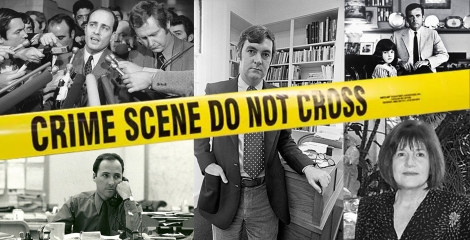Los Angeles has no shortage of notorious crimes, nor of great writers. When true accounts of the former are penned by the latter, the results are some fascinating reads.
In any good true crime book, the place where deadly deeds occur is not merely a background for the action but rather a vibrant character in its own right. Who better to tell our city’s most terrifying true tales than authors who know life in Los Angeles firsthand?
Here are six nonfiction titles about real Los Angeles crimes and trials, written by six stand-out authors who know L.A. as only true insiders do.
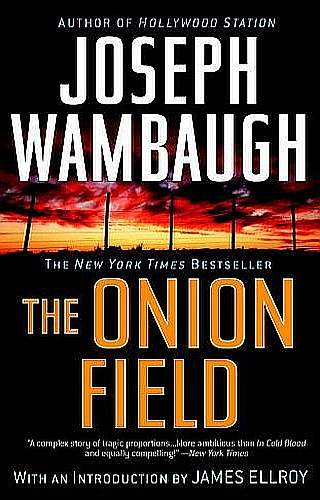
The Onion Field by Joseph Wambaugh. The kidnapping of Los Angeles police officers Ian Campbell and Karl Hettinger by two ex-cons off a Hollywood street in 1963—and the ensuing execution of one of the officers in an onion field in Kern County—became the basis for Joseph Wambaugh’s debut work of nonfiction. Wambaugh was a young LAPD officer on duty the night Campbell and Hettinger were abducted. Officer Wambaugh, a self-described “closet scribbler” who wrote during his off-duty hours, followed the case throughout the long years of legal proceedings.
By 1972, when the judicial wrangling finally came to end, Wambaugh had risen through the ranks of the LAPD as well as the bestseller lists. He had written two police novels, The New Centurions (1970) and The Blue Knight (1972), both winning critical and popular acclaim (though not from the LAPD brass, who reportedly preferred the staid and sanitized Dragnet portrayal of police work). Detective Sergeant Wambaugh took a six-month leave of absence from the Los Angeles police department to write the definitive account of the kidnap-murder case of his former colleagues, Campbell and Hettinger.
Joseph Wambaugh later said that his first two books were practice for his true crime tour de force, The Onion Field. Published in 1973, the book became an international bestseller and was adapted for a 1979 feature film of the same name. Determined that the film be as authentic and factual as his book, Wambaugh turned down offers from studios and raised the production money himself to assure creative control. Lawyers for one of the “Onion Field” killers complained that Wambaugh’s vivid portrayal had immortalized the crime and hindered his client’s chances for parole. Joseph Wambaugh said he “shed no tears” over that.

Suspect Jimmy Lee Smith (left), directs officers in the reenactment of the slaying of L.A. policeman Ian Campbell. At the murder scene, Sgt. Pierce Brooks points a gun at Sgt. G.H. Bates. The arrow shows where Officer Karl F. Hettinger escaped over the fence, [1963]. Herald Examiner Collection
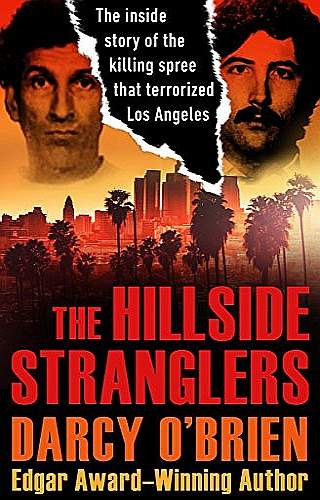
The Hillside Stranglers by Darcy O’Brien. The savage spree of serial killer duo Kenneth Bianchi and Angelo Buono was mercifully short, but horribly prolific. In the four-month span of October, 1977 through February, 1978, Bianchi and Buono stole the lives of at least ten women, dumping their bodies on hillsides in and around Los Angeles. When the so-called “Hillside Strangler” trial was set to begin in 1981, author Darcy O’Brien, who had grown up in Los Angeles, was living the life of a university professor in Tulsa, Oklahoma. O’Brien took an interest in the serial murder case unfolding in his hometown when he found out that Ronald M. George, his old roommate from Princeton days, would be the presiding judge.
Darcy O’Brien was an archetypal son of the city: born in 1939 to film actor parents George O’Brien and Marguerite Churchill, he grew up amid the iconic stars of Hollywood’s Golden Age.
O’Brien made a splash on the literary scene in 1977 with the publication of his first book, A Way of Life, Like Any Other, a fictionalized account of his Tinseltown childhood. The book won PEN’s Ernest Hemingway Award for best first novel. He followed up his early success with two more novels before fate came calling in the genre of true crime.
Darcy O’Brien took a leave from his position at the University of Tulsa to return home and delve into the disturbing serial murder case of Bianchi and Buono. Published in 1985, The Hillside Stranglers told the gruesome true story of the killer cousins and their reign of terror. A television miniseries soon followed, as did more bestselling true crime books by O’Brien, including Murder in Little Egypt and A Dark and Bloody Ground.
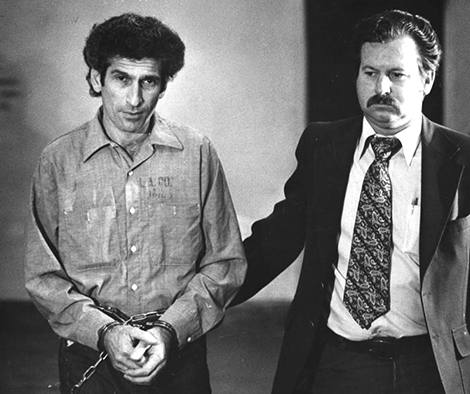
Angelo Buono, left, the accused accomplice of confessed Hillside Strangler, Kenneth Bianchi, was arraigned in the Los Angeles Criminal Courts Building, where he pleaded innocent to 10 counts of murder and 14 counts which include conspiracy, kidnapping, and rape, [1979]. Herald Examiner Collection
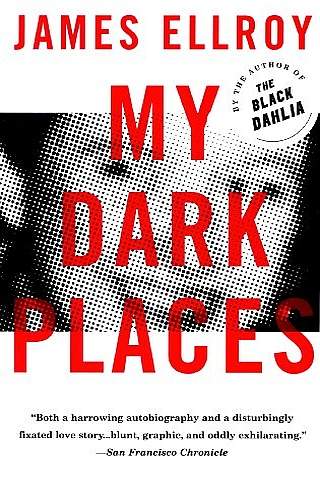
My Dark Places by James Ellroy. The noir historical crime novels of Los Angeles born-and-bred bad boy James Ellroy are legendary. Lesser known, however, is the fact that the famous author’s intense interest in crime began with the murder of his own mother, Jean Hilliker Ellroy, found strangled by the playing field of Arroyo High School in El Monte in 1958 when James (born Lee Earle Ellroy) was only ten years old. The case remained unsolved over the decades as the bookish, motherless boy grew into a troubled law-breaking teenager, to a troubled law-breaking young adult, and eventually into a celebrated author.
After publishing more than a dozen successful books of hard-hitting crime fiction, including the much-heralded “L.A. Quartet”—The Black Dahlia, The Big Nowhere, L.A. Confidential, White Jazz—and 35 years after his mother’s murder, James Ellroy embarked on a dark journey for answers to the one crime he’d spent his life avoiding. Ellroy enlisted the help of Los Angeles County Sheriff’s Department homicide detective Bill Stoner to launch an exhaustive reinvestigation of his mother’s cold case. The literary result was My Dark Places, the very real story of the long-unsolved homicide of Jean Ellroy.
James Ellroy’s raw account of his mother’s grisly death by an unknown assailant is extraordinarily unique and revealing. Ellroy spares neither himself nor his late parents in detailing the circumstances of his fractured early life and the aftermath of the murder that shaped his very being. Newsday described My Dark Places as “part thriller, part screech of pain, part botched exorcism…A candid chronicle of growing up weird under the sentence of unexpressed grief.” If you’ve read James Ellroy’s fiction, My Dark Places may make you see his work in a new light. If you haven’t read Ellroy yet, this modern masterpiece is a great choice to start.
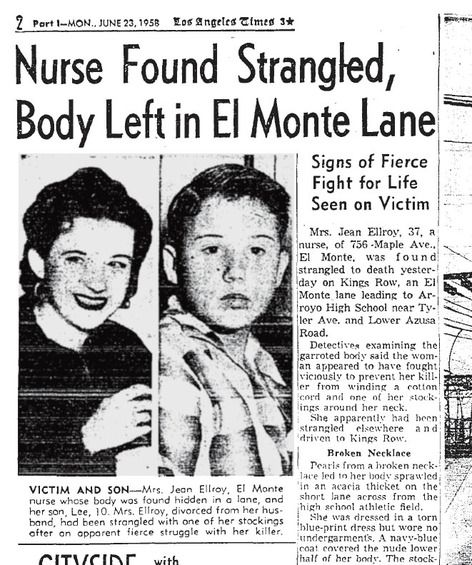
News coverage of the Jean Ellroy murder, [1958] Los Angeles Times
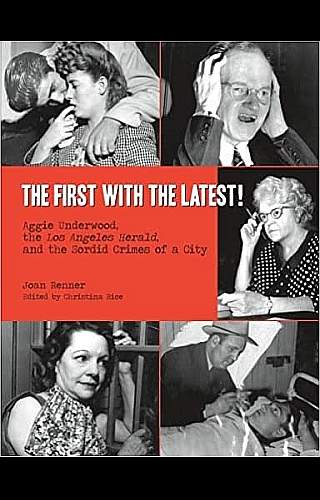
The First With the Latest!: Aggie Underwood, the Los Angeles Herald, and the Sordid Crimes of a City by Joan Renner. Arguably the queen of historic Los Angeles newspaperwomen, Aggie Underwood occupies a hallowed place among both investigative journalists and feminist trailblazers. Underwood had a long and storied career in news media, and her ascension in the business stands as a testament to talent, tenacity, and true grit. Rising from switchboard operator at the Los Angeles Record to a noted reporter specializing in high profile mayhem and murder, Aggie Underwood became city editor of the Evening Herald and Express in 1947, making her the first woman in the country to hold such a position at a major metropolitan daily.
In the photo laden pages of The First With the Latest!, author Joan Renner gives a mesmerizing tour of Aggie Underwood’s career and some of the wildest, truth-is-stranger-than-fiction Los Angeles crimes of yesteryear. Renner dug deep into the Los Angeles Public Library Photo Collection for rare images of the cases and faces that made Aggie Underwood a powerhouse and celebrity in her own right. When Underwood retired in 1968, her farewell gala was hosted by Bob Hope. Not bad for a gal who sought her first job so she could afford a pair of stockings.
Joan Renner knows Los Angeles crime history like no one else—except perhaps her late subject, Aggie Underwood. Renner came to Southern California as a child when her parents moved the family from Chicago to Orange County. She moved to Los Angeles in 1985 and has been a devoted social historian ever since. Blogging on her website, Deranged L.A. Crimes [https://derangedlacrimes.com/], and appearing regularly on true crime television shows, Renner has the scoop on murder and scandal in the Southland. Renner’s crisp writing style and gift for storytelling are the perfect blend for this Aggie Underwood true crime compendium. Bonus: A longtime volunteer for the Los Angeles Police Museum, Joan Renner contributed her archival research skills for the bestselling book LAPD ’53 by James Ellroy and Glynn Martin.

Aggie at her desk, two years after becoming the city editor for the Los Angeles Herald and Express. Seen among her office belongings is a baseball bat, [1949]. Herald Examiner Collection
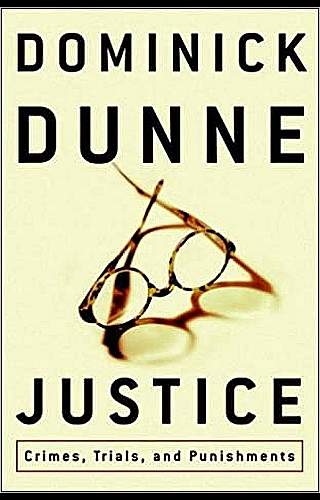
Justice: Crimes, Trials, and Punishments by Dominick Dunne. Though born and bred in Connecticut, Dominick Dunne embraced Los Angeles with a fervor, becoming a veritable uber-Angeleno. Dunne began a career as a television producer in New York City and followed the job to L.A. in the mid-1950s. For two decades Dunne was a prime mover in the industry, producing television and features, and regularly hosting parties in his lavish Beverly Hills home that were attended by every star in the stratosphere. As with so many Hollywood success stories, Dominick Dunne had a major fall from grace that left him shattered both personally and professionally. He limped away from Los Angeles in 1979 and took up residence in rural Oregon with no clear purpose other than to escape a life marked by chronic self-destruction.
In a secluded cabin in the middle of nowhere, Dominick Dunne contemplated the life he had led at the center of somewhere, engaging in the type of honest introspection he had steadfastly avoided in Hollywood. Working alone and sober in the Oregon wilderness, Dunne discovered that he had an untapped gift for prose. His first book, titled The Winners, debuted in 1982. Not surprisingly, it was a “Hollywood novel,” a ripe if familiar tale of salacious deal making and soul selling. The same year he launched his career as an author, Dunne suffered an anguish far more devastating than any of the heartaches he had inflicted on himself. His daughter, actress Dominique Dunne, was murdered in front of her West Hollywood home in September of 1982, strangled by her ex-boyfriend, John Sweeney, a sous chef at the “in” restaurant Ma Maison on Melrose.
Dominick Dunne attended the trial of his daughter’s killer. The experience was wrenching, more so because Sweeney beat the murder charge and was instead convicted of voluntary manslaughter, receiving a sentence of just six years in prison of which he served only two and a half. Dunne wrote an article for Vanity Fair titled, “Justice: A Father’s Account of the Trial of his Daughter’s Killer.” Dominick Dunne spent the rest of his career as a prolific author and television personality who doggedly covered crimes and trials, particularly those involving the rich and famous, particularly where he perceived injustice being served. Justice: Crimes, Trials, and Punishments is a collection of Dunne’s essays, many based on his firsthand accounts as courtroom observer. From his own daughter’s murder to the Menendez brothers to the O.J. Simpson trial, the book is rich with true accounts of wicked murders and how justice is meted out—or not—for the glitterati.

Two of O.J. Simpson’s defense attorneys entering the Criminal Courts Building for his murder trial: Robert Shapiro, left, and Johnnie Cochran, right, [1995]. Photo credit: Gary Leonard Collection

Helter Skelter by Vincent Bugliosi with Curt Gentry. First published in 1974, Helter Skelter remains the number one bestselling true crime book of all time. The book gives a detailed—and thoroughly terrifying—account of the notorious Manson Family Murders that sent waves of panic crashing over Los Angeles in 1969. Vincent Bugliosi prosecuted Charles Manson and his followers for the almost unthinkably gruesome murders of actress Sharon Tate and four others at a home in the posh hills above Los Angeles and the equally depraved killing of Leno and Rosemary LaBianca in Los Feliz the following night.
A native of Minnesota, Vincent Bugliosi earned his law degree from UCLA and became a deputy district attorney in Los Angeles in 1964. He had a relatively short but very impressive record as a prosecutor when the Manson case (often referred to as the “Tate-LaBianca murders”) was assigned to him in November of 1969. The enormous complexity of the case, with multiple defendants, victims, and the necessity of unraveling Charles Manson’s bizarre philosophies that served as motive, turned the trial into the prosecutorial challenge of a lifetime. Bugliosi emerged the victor, winning convictions and death sentences for Charles Manson and his murderous followers, thus putting an end to both Manson himself as well as his evil influential power. Or so Bugliosi thought.
Vincent Bugliosi left the Los Angeles County District Attorney’s office in 1972 and spent the rest of his career in Los Angeles as a defense lawyer and noted author. Helter Skelter was the first of several successful books. Other true crime books by Vincent Bugliosi include And the Sea Will Tell and Till Death Us Do Part.
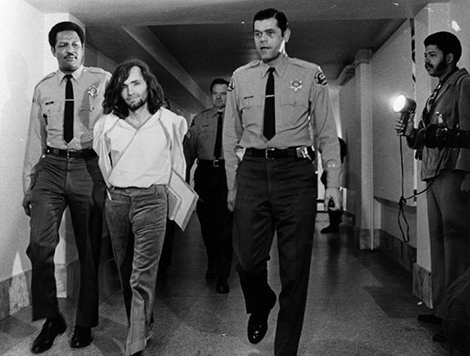
Deputy sheriffs escort Charles Manson from the court, where after a heated session, Manson was revoked on his right to act as his own attorney. Judge William B. Keene appointed Charles Hollopeter to be Manson’s defense counsel, [1970]. Herald Examiner Collection



